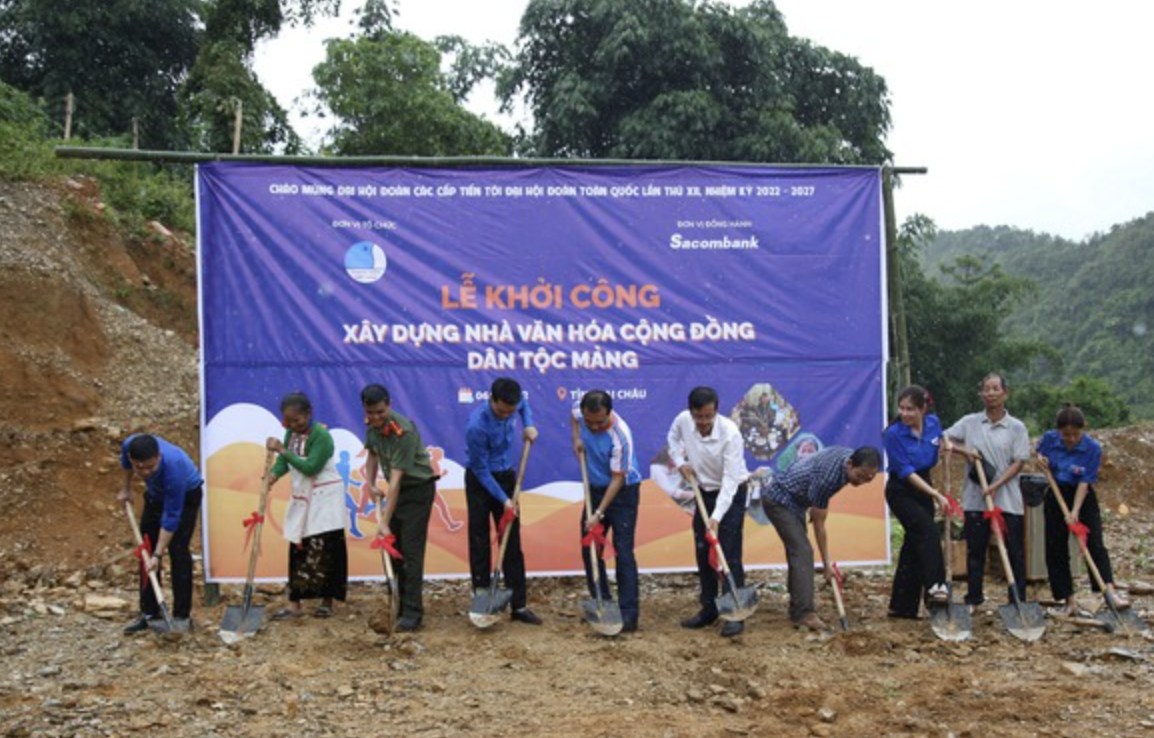
Overcoming difficulties in daily life, the Mang ethnic people have well preserved their unique cultural features, contributing to building and developing an advanced Vietnamese culture, rich in national identity.
The Mang is one of sixteen ethnic groups with very few people in Vietnam. In Trung Chai commune, Nam Nhun district, Lai Chau province, the Mang ethnic group is one of two ethnic minorities that benefits from the government’s special assistance plan under Plan 1363 on supporting conservation and promotion of unique traditional cultural values for the Mang and Cong ethnic people, part of Project 9.
Overcoming difficulties in daily life, the Mang ethnic people have well preserved their unique cultural features, contributing to building and developing an advanced Vietnamese culture, rich in national identity.
In recent years, the mass art movement of the Mang ethnic villages in Trung Chai commune has developed strongly, attracting the participation of a large number of people. Local art troupes usually perform during holidays, Tet, and major anniversaries... thereby creating a healthy entertainment playground, contributing to community cohesion, preserving and promoting national cultural identity in the region.
Trung Chai commune currently has 3 performance teams in the 3 villages of Nam No 1, Nam No 2, and Nam Sao. Each team has 10-15 members, who perform at least once a month to serve the local community. They all build specific practice plans from time to time, to serve performances at festivals and anniversaries of the commune and villages. The team organizes activities and practices for cultural exchanges so that members can meet each other and practice, which help enrich the spiritual life of the members after hard working days. In addition, the teams actively collect and adapt many songs and dances through tapes and the Internet to enrich ethnic dances and educate people more about their ethnic cultural traditions.
To achieve this result, the People's Committee of Trung Chai commune has promptly discovered and fostered individuals with typical artistic talents to serve as the core of the commune's artistic movements.
Annually, to mobilize and encourage the mass art movement, the local government partly funds local art troupes to purchase equipment and rent costumes for art performances. On Tet holidays, festivals or major anniversaries of the country, the mass art movement in villages in Trung Chai commune takes place enthusiastically. These activities have not only created a joyful and exciting atmosphere, strengthened community solidarity, enriched the spiritual life of members, but also created good conditions for many amateur public actors to have the opportunity to exchange and learn from each other.
Although the budget for these teams is limited, costumes, props, and facilities are modest, the non-professional artists of the villages have constantly practiced, created, and staged good and unique musical performances, leaving many impressions in the hearts of the audience. The content of their performances expresses the thoughts and aspirations of the masses, about the change of the homeland, celebrating the country's renewal.
The mass art movement has become a rich spiritual food for a large number of people, contributing to preserving and developing national culture, tightening solidarity between people. In addition to dancing and singing, the cultural teams also participate in traditional ethnic costume competitions to promote, introduce and preserve the cultural values of the Mang ethnic group in the commune. With a passion for culture and art and a love for their cultural traditions, these mass arts cores will continue to pass the fire to the next generations, so that the grassroots mass arts movement can thrive stronger, enhancing the spirit of solidarity in the community.
To develop this movement, the commune has regularly organized cultural exchanges and performances during holidays, New Year, the Great Unity Festival of ethnic groups... These events not only serve the people in the area, but they are also opportunities for art team members to learn and exchange more knowledge on various fields, help prevent social evils, and build a new cultural life